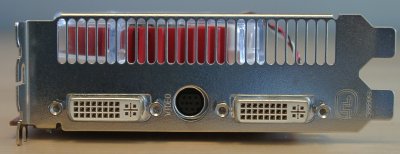SAPPHIRE Radeon X1900 XT 512MB
SAPPHIRE Radeon X1900 XT 512MB PCIe
Who better to produce a competitively priced X1900 card than SAPPHIRE Technologies, ATI's biggest AIB (Add-In Board) partner. Size-related economies of scale extend to lower buy-in prices for both the GPUs and bundled software. SAPPHIRE's X1900 XT 512MB card, as you can patently see, is almost identical to PowerColor's. Take away the SAPPHIRE sticker on the cooler, replace it with, say, ASUS or MSI, and who's going to know any better?
One interesting departure from the PowerColor card is the set of pins in the upper-left section, seen on a number of reference cards, and, according to the bigwigs at ATI, used for internal debugging. We reckon that shipping SAPPHIRE X1900 XTs will have just the regular solder pads found on other cards.

An otherwise identical PCB and cooler arrangement, though. X1900 XTs draw enough juice to warrant an auxillary power connector, which is the 6-pin plug on the right-hand side. Right now, if you want real high-end performance from an ATI SKU, you're forced into choosing a card with a double-height cooler. The massive slab of copper conducts heat from the 384-million transistor-filled R580 core. The cooler's 65mm fan then exhausts out the heat from the rear of the card. It would take a major re-design from a card partner to launch a single-slot design that was just as effective in removing the build-up of heat.

Whipping off the cooler shows just what a meaty affair it is.

8 thick thermal pads make reasonable contact with the high-speed DRAM underneath. The copper block has a solid insert where it makes contact with the GPU. Heat is then spread to the fins, creating a greater cooling surface area, and then exhausted through the rear of the card.

Here's where the steady stream of warm air exits, funneled from the enclosed cooler. Dual dual-link DVI is the norm, and SAPPHIRE, along with PowerColor, offers basic VIVO functionality via ATI's venerable Rage Theater ASIC.

Four main screws hold the cooler's aluminium base on to the PCB, and a further four smaller screws ensure that the base's copper insert exerts the correct level of pressure on the R580 core. Other than that, the rear is pretty spartan.









